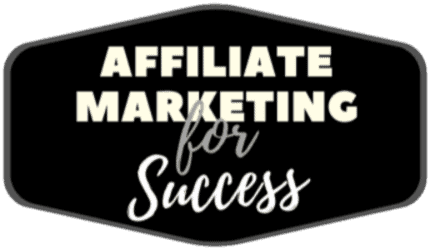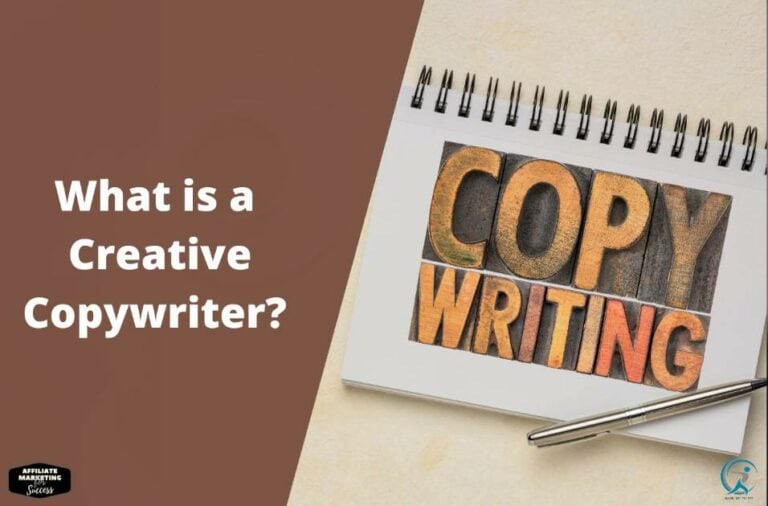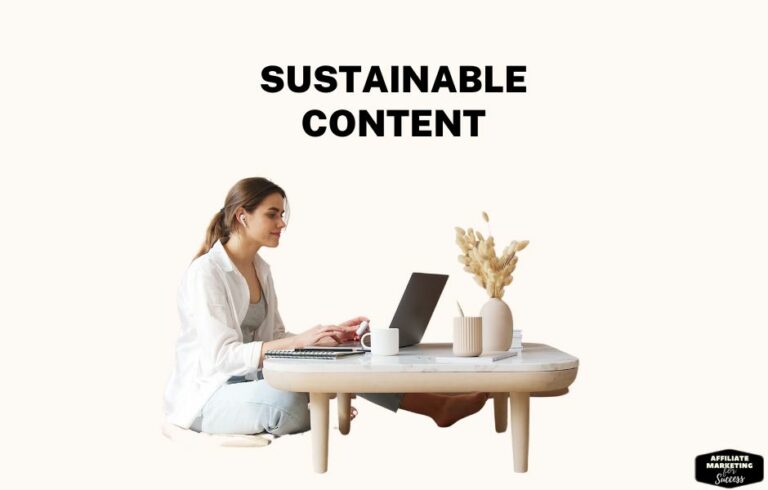Build a Blogging Business from Scratch: 2024 Ultimate Guide
Thinking about starting a blog and making money? Stop guessing. Take action. This guide shows you exactly how to build a blogging business from scratch. We use real strategies, not hype. Focus on steps that work. No fluff. Just direct, tested advice to get you online, growing, and earning fast.
Key Takeaways
- Choose a profitable niche using targeted research methods.
- Set up fast, reliable hosting and secure your domain name correctly.
- Create SEO-optimized content consistently to grow organic traffic.
- Monetize early with affiliate marketing and diversified income streams.
- Leverage email marketing to build a loyal, engaged audience.
- Use strategic tools to streamline content and SEO processes.
- Follow legal requirements to protect your business and brand.
- Scale effectively through outsourcing and smart audience growth.
How to Start a Blog from Scratch: The 7 Core Steps
Starting a blog feels overwhelming. But it’s simple. Seven steps. No fluff. Let’s get it done.
1. Pick a Profitable Niche
Passion won’t pay bills. Profit does. Target a niche with hungry buyers. Think: solutions, frustrations, recurring needs.
“Can you name 5 products they’ll pay for? Yes? Then you’re on track.”
Use this checklist to validate ideas before you start.
2. Register a Domain & Host
Your domain is your digital address. Host is your utility bill. Choose both wisely. Speed matters. Security matters. Uptime matters.
| Domain Must-Haves | Hosting Must-Haves |
|---|---|
| Short, brandable, keyword-rich | 99.9% uptime guarantee |
| No numbers or hyphens | SSL certificate included |
| .com preferred | Fast loading speeds |
Check this guide for step-by-step registration.
3. Build the Blog (5 Minutes)
Install WordPress. Pick a clean theme. Strip the bloat. Mobile-friendly? Good. Slow? Fix it.
4. Publish Killer Content
Content isn’t king. Useful content is. Solve real problems. Be specific. Be fast. Be repeatable.
5. Optimize for Search
SEO isn’t magic. It’s clarity. Use titles users type. Answer questions clearly. This system works every time.
6. Add Monetization Paths
List 10 affiliate offers that fix problems your readers already have.
7. Drive Traffic & Build List
Traffic dies. Email list grows. Add opt-ins. Offer value. Send weekly tips. Profit follows.
Step by Step Blogging Business Guide: From Zero to First Post
Starting a blog from zero feels overwhelming. Where do you begin? Think of it like building a house. First, you lay the foundation.
Step 1: Pick a Profitable Niche
Your niche must meet three criteria. Solves a problem. Has buyers. Fits your interest. before you skip this step. Bad niche = wasted effort.
| Key | Why It Matters |
|---|---|
| Problem Solving | People pay to fix pain points |
| Buyer Intent | Traffic must convert, not just visit |
| Your Interest | Keeps you going when it gets hard |
Step 2: Register Your Domain & Host
Your domain is your address. Get it at [INTERNAL_LINK slug=’how-to-register-a-domain-name’ text=’namecheap or godaddy’]. Hosting? Use managed WordPress like Kinsta or WPX. Speed kills bounce rates. .
Step 3: Install WordPress & SEO Basics
One-click install. Boring. Necessary. Then add Yoast or Rank Math. Turn on XML sitemap. Set permalinks to /%postname%/.
What’s your biggest fear right now? Setup? Writing? Monetizing? It doesn’t matter. Just finish one task today. Tomorrow, do another. Momentum beats perfection. , not later.
Your first post isn’t magic. It’s a milestone. Write it. Publish it. Then write the next one. Five posts beats zero. Every time. . But publishing beats obsessing.
How to Choose a Blog Niche That Matches Your Skills and Market Demand
Pick a niche. Don’t guess. Match skills and demand.
Step 1: Audit Your Expertise
What do you know cold? Cooking. Tech. Fitness. Finance. Pick one. Your blog runs on your knowledge. Can’t fake it long.
- List topics you teach others
- Note passions that won’t burn out
- Find skill overlap: profitable niches demand expertise
Step 2: Test Market Hunger
People search? Money follows. Use SEO tools. Google Trends. AnswerThePublic. See if they ask. If zero queries, say goodbye.
| Niche Idea | Monthly Searches | Buyer Intent Keywords? |
|---|---|---|
| Vegan meal prep | 22,000+ | Yes (“best vegan protein”) |
| Retro Game Collecting | 4,500 | No (“how to value”) |
Step 3: Make It Sustainable
Blogs starve without content fuel. Can you write 50 posts? Not in one go. Over a year? Good. Check the content creation pipeline. Automation helps. But soul sells.
Ask hard: Are buyers online? Will they click affiliate links? The Walmart program pays well. But only if the niche shops. See: Walmart affiliate success.
Tiny niche? That’s fine. Millionaire mindset: 1000 true fans. Not 10 million ghosts.
Best Blogging Platforms for Beginners: WordPress vs Alternatives
You want a blog. Fast. Simple. Profitable. So which platform? WordPress or an alternative?
WordPress runs half the web. It’s the heavy hitter. No cap. Full control. But it’s not always easy for beginners.
WordPress: The Beast (Worth Taming)
Two versions: WordPress.com (hosted) and WordPress.org (self-hosted). The .org version wins every time. It’s how you start an affiliate marketing blog right. Install plugins. Add features. Full ownership.
Need hosting? See a Kinsta review to pick fast, reliable options.
| WordPress Pros | WordPress Cons |
|---|---|
| Total flexibility | Learning curve |
| Supports SEO | Security upkeep |
| Scales fast | Self-managed hosting |
Beginner-Friendly Alternatives (Lite Versions)
Think Squarespace, Blogger, Wix. Drag. Drop. Done. Less power. Less freedom. But faster setup.
Good if you hate tech hurdles. Bad if you want to grow big. You can’t install critical SEO tools. No real SEO power like on WordPress.
- Squarespace: Dead simple. Clean templates. Poor plugins.
- Blogger: Free. Owned by Google. Extremely limited.
- Wix: Flexible builder. Locks you in. Hard to migrate.
“Pick the platform that scales with you, not just the one easiest today.”
Want traffic? Start on WordPress.org. Register a domain name, grab hosting, install. One time pain. Endless gain.
Your blog is your business. Build it on the right foundation. No shortcuts. No fluff.
Website Hosting for New Blogs: Picking the Right Provider
Your blog’s foundation? Hosting. Weak hosting? Slow site. Lost traffic. Frustrated readers. You need speed, uptime, and support. Not fluff.
What Matters in Blog Hosting?
Three things. Only three.
- Speed: Loads in
- Uptime: 99.9%. No excuses.
- Support: Fix issues fast. Night or day.
Ignore everything else. Don’t get tricked by flashy extras.
Think of hosting like an engine. A cheap one sputters. A good one roars. Your blog needs to *roar*.
Top Picks for New Blogs (2024)
| Provider | Why It Works | Best For |
|---|---|---|
| Kinsta | Google Cloud. 99.98% uptime. 24/7 chat. | Blondie blogs. Kinsta deep dive |
| WPX | Free CDN. Zero downtime migrations. | Speed demons. WPX tested |
Shared hosting won’t cut it long-term. It’s crowded. Like a hostel. You want a private house.
Start with managed WordPress hosting. Level up. Fast.
Is your host freezing your site after 1,000 visits? Then it sucks. Real readers don’t wait.
Your Pagespeed score drops? Goodbye SEO rankings.
Blame cheap plans. Or worse – oversold servers.
What happens when your blog blows up? Can they handle traffic spikes? Ask. Demand proof.
“I switched to WPX. My bounce rate dropped 30%. Immediately.” – Mark, lifestyle blogger
Blog Design and Branding Tips: Create a Professional, Trustworthy Look
Your blog’s design is your handshake. Weak? People leave. Strong? They stay. Trust starts with a clean, professional look. But how do you nail it fast?
Pick a Theme That Fits, Not Flashy
Flashy themes distract. Simple wins. Choose a clean layout. One that lets your content breathe. Speed matters. Users bail if pages crawl. Run it through PageSpeed Insights now.
Brand Colors & Fonts: Pick a Mood
Colors evoke emotion. Blue feels safe. Red demands action. Black signals luxury. Pick one. Stick to two fonts max. Mixing styles kills consistency. Alternate them? Worse. Be predictable. Build recognition.
“People won’t remember every word you write. They’ll remember how your site felt.”
Logo & Favicon: Tiny, But Crucial
Your logo isn’t art. It’s a signal. Simple. Bold. Scales down. Your favicon is the tiny icon in tabs. Don’t ignore it. It’s your next impression after the URL.
| Element | Goal | Test |
|---|---|---|
| Color Palette | Feel trust instantly | Show to 5 people. Ask: “What do you feel?” |
| Typography | Read in 0.5 sec | Squint test: still readable? |
| Header | Gut-level grab | Can someone tell you your topic in 3 sec? |
Consistency builds trust. Use the same colors, fonts, and tone. Every page. Every post. Want proof? Look at top blogs. Same feel. Everywhere. No guesswork. No confusion. User stops scanning. Starts listening.
Creating Content for a New Blog: SEO for Blogging Business Success
You start a blog. It’s invisible. No clicks. No traffic. Why? Poor SEO.
SEO isn’t magic. It’s craft. It’s structure. It’s intent matching. Your content must solve a problem. Fast. One question: What does your reader want?
Keyword Basics
Find keywords. Use tools. Match search intent. You don’t guess. You research. Is the intent informational? Commercial? Navigational? Write for that.
| Keyword Type | Example | Content Match |
|---|---|---|
| Informational | how to start a blog | Guide, tutorial |
| Commercial | best web hosting 2024 | Comparison, review |
Content That Ranks
Structure matters. Headers break walls of text. Use H2s. H3s. Short sentences. Line breaks. You want scannable. Not soggy.
Place keywords naturally. Title. First 100 words. One H2. URL. But never force it. Google isn’t dumb. It sees stuffing.
Write like you talk. Readers are human. Not robots. But your content must pass human *and* bot tests. Readability is king. Learn what makes a blog post climb rank fast.
Don’t forget pillars. Cluster content. Cover a broad topic deeply. Use semantic clustering techniques to map your content universe.
- Answer real questions
- Use data, not fluff
- Update often
Content decays. Refresh. Repurpose. Keep it alive. A dead post is dead weight. Audit every 6 months. Fix broken links. Optimize images. Speed matters. A slow page loses. Period.
Affiliate Marketing for Bloggers: Affiliate Products to Promote on Blogs
You’ve got a blog. Now make it pay. Affiliate marketing turns readers into revenue. But not all products work. What should you promote?
Pick Products That Fit Your Niche
Your audience trusts you. Don’t break that for a quick buck. Promote tools, services, or goods they already need. Tech blogger? Hosting and software kill it. Health niche? Supplements and gear win.
| Blog Niche | Top-Performing Affiliate Products |
|---|---|
| Tech & Web Development | WordPress hosting, domain registrars, AI tools |
| Fitness & Health | Protein, gear, supplements |
| AI & Marketing Tools | AI writers, SEO tools, chatbots |
Example: It’s easier to sell high-quality hosting to a web dev than yoga mats. Match product to reader intent.
Go for High-Value, Recurring Offers
One-time sales pay peanuts. Look for recurring commissions. Web hosts, SaaS, and subscriptions pay every month. Stack those checks.
Use real reviews. Pros and cons. Only recommend what you’d pay for. Fake praise kills trust fast. Would you sell this to your mom?
“Affiliate marketing isn’t selling. It’s helping your audience get what they need. Profit follows trust.”
Check programs you’re eyeing. See what separates the best from the rest. Cookie lengths, commissions, rules.
Your blog’s traffic isn’t enough. Send readers to the best deal. Not the highest payout. Always default to truth.
Blog Monetization Strategies 2024: Beyond Affiliate Marketing
Affiliate marketing isn’t the only way to make money. You need multiple income streams. Relying on one source is risky. Why?
If the market shifts, you lose everything. Diversification is your safety net. What if your affiliate link gets banned? You need backups.
Proven Monetization Beyond Affiliates
Here’s what works now. These methods scale fast. They also stick longer.
| Type | Earning Potential | Entry Difficulty |
|---|---|---|
| Display Ads | $$ | Easy |
| Digital Products | $$$$$ | Medium |
| Sponsored Content | $$$ | Medium |
| Email Courses | $$$$ | Easy |
Digital products beat ads long-term. A $50 eBook brings 100x ROI. Selling once. Getting paid forever. Think about it.
Got an audience? Sell them value. Not just promotions. Introduce them to evergreen content that stays relevant. It builds trust. And trusts lead to sales.
“The best marketing doesn’t feel like marketing.” – Tom Fishburne
Sponsored posts work fast. Brands want credibility. You have it. Charge per post. Or use performance-based fees.
Email monetizes better than social. Why? You own the list. Social platforms change rules overnight. Your list is forever. Combine email offers with digital products for big wins.
Use smart email marketing at every stage. Free readers become buyers. Buyers become repeat customers.
Cut the dependency. Stack income types. Start testing ads, downloads, and partnerships today. Take control. Build a real asset. Not just another side hustle.
Email Marketing for Bloggers: Build an Audience from Scratch
Email lists are your blog’s backbone. You own them. Social media? Platforms can vanish. But emails? Safe. Direct. Powerful.
Start with lead magnets
A freebie hooks readers. Use a checklist. Cheat sheet. Short course. Give it away. They give emails. Simple trade.
Which performs better? Test it. A spread of exit popups. A fixed bar above your post. Let behavior decide.
| Type | Conversion Rate | Best For |
|---|---|---|
| Lead magnet (PDF guide) | 20-30% | Skilled niches (SEO, hosting) |
| Webinar sign-up | 10-15% | Big-ticket affiliate offers |
| Content upgrade | 15-25% | Long-form how-to posts |
Nurture with value
Send tips. Insights. Exclusive posts. Not “Buy this!” No one likes sales pitches. Provide useful content first. Learn how to sequence your emails right.
How often? Start weekly. Consistency beats frequency. Match what your audience expects. Drive too hard? They’ll unsubscribe fast.
“Your list will monetize itself when every message adds weight.”
Then? Pitch smart. Segment your list. Anyone interested in hosting? Hit them with a Kinsta review. Parents reading budget tips? Guide them to Walmart affiliate deals. Match relevance to earnings. Done well? This becomes your profit engine. Not fluff. Real results.
How to Drive Traffic to a New Blog: Organic, Free, and Paid Methods
Traffic starts with visibility. You want readers? They gotta find you. New blogs face a cold start problem. No links. No rank. No followers. How do you fix this?
Organic: Stack the deck
SEO isn’t magic. It’s pattern matching. Google wants fast, helpful, structured content. SEO builds long-term leverage. Write content that answers specific questions. Target long-tail keywords first. Speed matters. Google PageSpeed Insights tells you what’s slow.
| Method | Time to See Results |
|---|---|
| SEO (long-tail) | 3–6 months |
| Social media engagement | 1–3 months |
| Paid ads (Meta, Google) | 1–7 days |
Free: Crush it outside your site
Post niche-specific value on Reddit, X, and LinkedIn. Don’t pitch. Help. Answer questions. Every reply boosts visibility. Start threads that challenge norms. “Why most beginners fail at [niche]…” works. Cross-promote via a solid social plan. Build an email list early. Use bribes (free tools, templates).
Paid: Burn money? Or make it?
Ads speed things up. But waste cash if your offer sucks. Test creatives fast. Scale winners. Start with $5/day. Promote posts that already do well organically. Retarget scrollers who didn’t sign up. Pair paid with content tailored to your niche.
Blogging Tools and Software Needed: Editors, SEO, and Productivity Apps
Running a blog without the right tools? It’s like driving blindfolded. You need editors, SEO aids, and productivity boosters.
Essential Blogging Software
Can you write in Word and call it a day? Sure. But you’ll lose readers fast. Use these:
- WordPress: Non-negotiable for serious bloggers. Paired with fast hosting.
- Grammarly: Catches dumb mistakes before they embarrass you.
- SurferSEO: Knows what Google wants before you do. Check out SEO writing to master it.
SEO Power Suite
Content sits invisible without SEO. Want rankings? Use a stack like this:
| Tool | Why It Matters |
|---|---|
| Ahrefs | See who links to you. Spy on competitors. |
| Google Search Console | Free. Tracks performance. Spots errors. |
| Semantic clustering tools | Build topical authority. Rank for clusters, not singles. |
Is your site loading slow? Test it with Pagespeed Insights. If it’s sluggish, fix it. Readers hate waiting.
Productivity Apps
Writing takes focus. Messaging apps kill it. Shield your time.
“You don’t need more hours. You need fewer distractions.” — Anonymous
Use apps like Toggl for tracking or Notion for organizing. Batch tasks. Turn off notifications. Your content — and your sanity — will thank you. Try Pomodoro: 25 minutes on, 5 off.
Your tools shape your output. Cheap ones? Cheap results. Pick wisely.
Blogging Business Legal Requirements: Protect Your Brand and Income
You’ve got the blog. Traffic flows. Cash trickles in.
But what if someone sues you? Or steals your brand?
Legal steps aren’t glamorous. They’re essential.
Skip them? You risk everything.
Register Your Business
Are you operating as *you*? That’s risky.
Form an LLC. It protects your personal assets.
Costs $50–$500. Depends on the state.
Think of it as insurance for your income.
| Requirement | Why It Matters |
|---|---|
| LLC Registration | Shields personal savings, house, car |
| EIN from IRS | Opens business bank accounts |
| Trademark Domain + Name | Stops copycats, builds brand trust |
Essential Legal Pages
Every blog needs these. No exceptions.
Put them in your footer. Make them visible.
Your visitors feel safe. You avoid fines.
Which pages? Read ahead.
- Terms of Service
- Privacy Policy
- Disclaimer (critical for affiliates)
Google looks for these.
No disclaimer? They can suspend AdSense.
Here’s how to draft them fast.
You’re sharing affiliate links?
FTC says you *must* disclose it.
Put a clear line: “We earn commissions on purchases.”
Above the fold. Not hidden in small print.
“Legal protection isn’t an expense. It’s a profit multiplier.”
You wouldn’t skip the lock on your storefront.
Why skip it online? Fix it today.
Your future self will thank you.
Secure your brand name now.
Building an Audience from Scratch: Content, Engagement, and Consistency
Audience building starts with one thing: content that matters. Not fluff. Not AI slop. Real value.
What problem does your blog solve? Who has it?
Content That Sticks
Write like you talk. Clear. Direct. Human.
Answer real questions. Use examples.
Check out writing for your audience.
- Solve one problem per post
- Use simple headlines
- Add images or lists for skimmers
Engagement Is Fuel
You can’t vanish after posting. Respond to comments.
Answer emails. Ask questions in your blog.
Turn readers into fans.
Try this: End every post with “What’s your take?”
Watch replies roll in.
Consistency Beats Virality
One viral post won’t build trust.
Posting weekly for 6 months will.
It’s like watering seeds. Steady wins.
“You don’t need more traffic. You need repeat visitors.”
| Week | Goal |
|---|---|
| 1-4 | Post 3x, engage daily, grow email list |
| 5-8 | Repost best content, refine topics |
| 9-12 | Double down on what works |
Your audience isn’t built once. It’s fed daily.
Use email tools to keep them close.
Miss one week? You lose momentum.
Hit publish. Again and again.
Scaling a Blogging Business: Outsourcing Blog Content Creation and Growth
You can’t scale a blogging business alone. Outsourcing content creation frees your time. It lets you focus on big-picture growth. But where do you start? And how do you keep quality high?
Find the Right Writers
Hire freelancers on platforms like Upwork or Fiverr. Look for portfolio samples. Test with small jobs first. Ask yourself: Can they match your voice? Do they grasp your niche? Check out how to write niche-specific content to train them fast.
| Hiring Tip | Why It Matters |
|---|---|
| Give a paid trial | Cuts risk, proves skill fast |
| Create a writing brief | Keeps tone and style consistent |
| Require SEO knowledge | Content ranks faster, organically |
Set Systems That Scale
Use tools like Trello or Asana. They track deadlines and edits. Build a content calendar. Assign topics weekly. Review performance monthly. Optimize what works. Cut what doesn’t.
Creating high-ranking posts needs more than writing. You need SEO. You need keywords. You need structure. See how to write a high-ranking blog post for a proven template.
Smart outsourcing isn’t cheap. But it’s faster than doing it all. Treat it like buying time. Your hourly value as a strategist is higher. Let writers handle execution. You focus on stacking traffic, income, and impact.
Scale only when systems are tight. Never before. Poor content hurts trust. Good content earns links and sales. Pick quality every time. Then multiply it.
Frequently Asked Questions
How to start a blog from scratch in 2024?
Pick a niche you know and care about. Use a simple platform like WordPress or Ghost, buy a domain, and pick a hosting service. Write helpful posts regularly and share them on social media to grow your audience.
What is the best blogging platform for beginners new to tech?
For beginners new to tech, WordPress.com and Wix are the best blogging platforms. They offer simple drag-and-drop tools, no coding needed, and ready-made templates to get you started fast. Both include hosting and support, so you can focus on writing, not tech hassles.
How does affiliate marketing work for bloggers starting today?
Affiliate marketing lets bloggers earn money by promoting products. You join a program, get a special link, and share it in your posts. When readers buy through your link, you get a small cut. Pick products your readers trust, and always disclose the partnership.
How much time does it take to see income from a new blog?
Most new blogs take 6-12 months to earn steady income, depending on niche, content quality, and promotion. Some see small earnings in 3-4 months with strong SEO and consistency. Speed depends on your effort and audience growth. Faster results require paid ads or promotions, but organic growth takes longer.
What are the legal requirements for running a blogging business?
You must register your business, get necessary licenses, and follow tax laws for income reporting. If you collect user data, comply with privacy laws like GDPR or CCPA. Always disclose paid partnerships and sponsored content per FTC guidelines.
How do you choose a profitable niche for a new blog?
Pick a niche you know well and that has steady demand. Check competitors to see what works and find gaps you can fill. Focus on topics with active audiences, like hobbies or common problems people search online to solve.
What are the most effective blog monetization strategies in 2024?
In 2024, the top ways to earn from a blog include display ads (like AdSense), affiliate marketing, and selling digital products (e-books, courses). Adding memberships or offering premium content also works well. Focus on high-quality content and SEO to grow your audience first—more traffic means more money.
Can you build a sustainable long-term blog business from scratch?
Yes, you can build a sustainable blog business from scratch by focusing on valuable content, consistent audience growth, and multiple income streams like ads, affiliate marketing, or digital products. It takes time, effort, and adaptation to trends, but it’s possible with dedication and a clear niche. Avoid shortcuts—prioritize quality and trust over quick gains.
You now have the full plan. Start today. Pick a niche. Buy hosting. Write content. Promote affiliate products. Build an email list. Stay consistent. Success comes from daily effort, not shortcuts. This path works. Take the first move.
References
- Build a Blogging Business in 2025: Step-by-Step … – Affiliate Marketing
- How To Start A Money-Making Blog In 2025 – The She Approach
- How to Create A Free Blog for Affiliate Marketing – YouTube
- Start a Blog for Affiliate Marketing | Step by Step Full Tutorial
- How To Start A Blog And Make Money In 2025 – Forbes
- How to Start a Business Blog (+ Blog Ideas That Make Money)
- How to Start a Blog (and Make Money) in 2025: Beginner’s Guide
- How to Start an Affiliate Marketing Blog [Step by Step Guide]
I’m Alexios Papaioannou, an experienced affiliate marketer and content creator. With a decade of expertise, I excel in crafting engaging blog posts to boost your brand. My love for running fuels my creativity. Let’s create exceptional content together!







